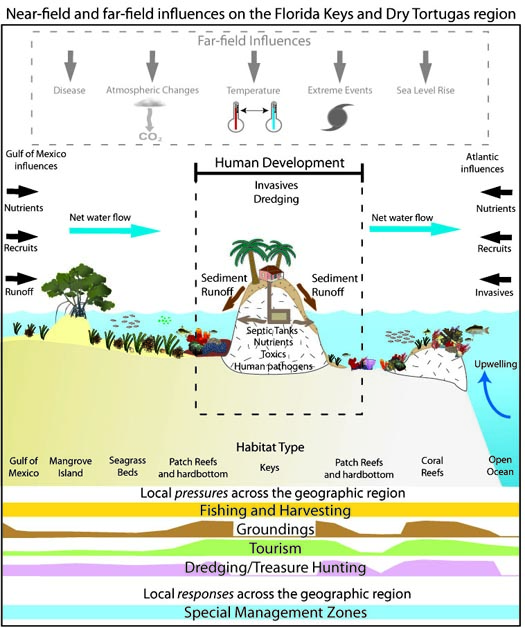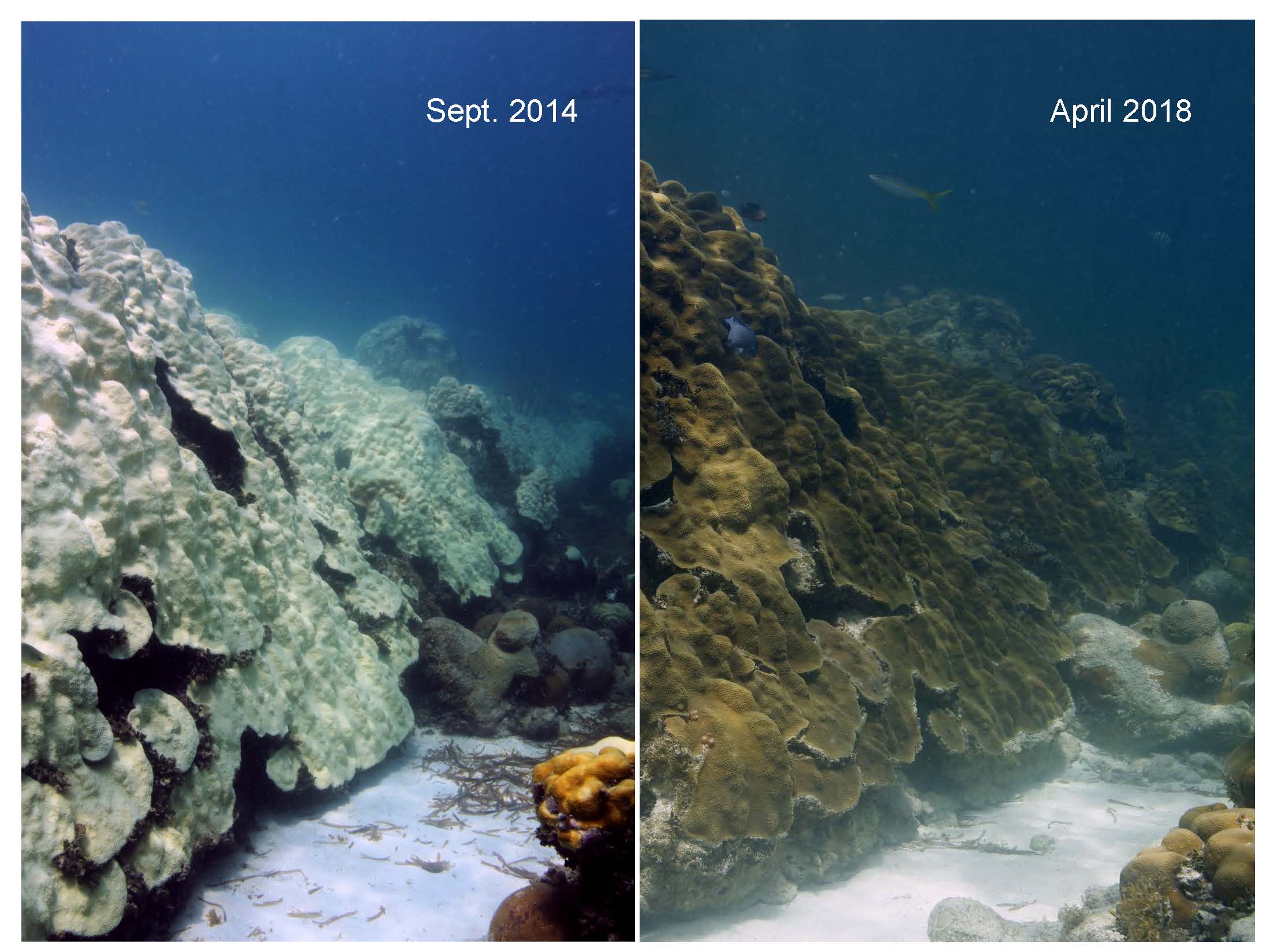A recent study by AOML and partners identified coral communities at Cheeca Rocks in the Florida Keys National Marine Sanctuary that appear to be more resilient than other nearby reefs to coral bleaching after back to back record breaking hot summers in 2014 and 2015 and increasingly warmer waters. This local case study provides a small, tempered degree of optimism that some Caribbean coral communities may be able to acclimate to warming waters.
Study Focuses on Contaminants Lurking in Urban Tidal Flooding
Tidal flooding from events such as the so-called “King Tides” and “Super Tides” are flooding urban coastal communities with increasing frequency as sea levels rise. These tidal flood waters can acquire a wide range of contaminants and toxins as a result of soaking in the built environment of urbanized coastlines. A multi- institutional, interdisciplinary research team, including scientists from AOML, is examining the types of contamination picked up from the urbanized coastal landscape and transported into coastal waters through tidal flooding.
New Tools Bring Ecosystem Benefits to the Forefront of Decision Making
The Marine and Estuarine Goal Setting for South Florida (MARES) project, led by NOAA’s Cooperative Institute for Marine and Atmospheric Studies at the University of Miami, continues to increase awareness of and appreciation for the value of coastal marine ecosystems, and their impacts upon human society. From 2009 through 2013, NOAA’s National Centers for Coastal Ocean Science funded MARES with the goal of creating a consensus-based process for managing South Florida’s coastal marine environments. MARES is unique in that it was among the first major efforts to include human benefits in a systematic framework to enable integrated ecosystem based management. The MARES approach embodies NOAA’s effort to serve as the Nation’s environmental intelligence agency by providing actionable information from science-based models to support environmentally-sensitive decisions made every day by individuals, communities, and governments.
“NOAA took a leadership role in funding the MARES project, and it is a step in the right direction”, said Eric Millibrandt, director of the Marine Laboratory at Sanibel. “I’ve used the concepts provided by MARES to help colleagues and non-technical individuals to better understand the ecosystem and its preservation.”
When natural resource managers make decisions, it is important that they take both the needs of the environment, as well as human population requirements and perspectives into consideration. This integrated approach is necessary to sustain a physically and economically balanced and healthy ecosystem. Coastal populations rely on and interact with their unique marine and estuarine flora and fauna on a daily basis.
In the last century, increased population, coastal development, climate change and sea level rise have damaged South Florida’s marine environment. As these changes continue, the long-term status of South Florida’s ecosystems and valuable resources will continue degrading. The coastal habitat is crucial to the regional economy, which relies on ocean related jobs such as, fishing and tourism. Since a healthy ecosystem is needed for economic survival, the interactions between Florida’s population and the ecosystem is important and can be used to help guide the management decisions regarding South Florida’s coastal ecosystems.
Typically, research and management on marine ecosystems have focused primarily upon the negative impacts humans have on the environment. MARES investigators realized that for citizens to embrace marine policy, it is essential they understand not only the variety of pressures on the system, but the benefits they derive from it and their role within it. Over 50 researchers (both natural system and human dimensions scientists), managers, and stakeholders collaborated to understand and document cause and effect relationships and the societal benefits of South Florida’s coastal marine environments. By studying coastal waters in the Florida Keys/Dry Tortugas, the Southeast Florida Coast, and on the Southwest Florida Shelf, MARES was able to reach a consensus as to which regulating processes were most significant and which key characteristics must be sustained. The MARES team is publishing their findings in 15 research papers in a special issue (volume 44) of the journal Ecological Indicators entitled: “Tools to support ecosystem based management of South Florida’s coastal resources.”
The tools MARES developed are currently being used in community planning projects to show the existing status of the marine environment and to incorporate human benefits in ecosystem management. One of the most popular MARES products used by resource managers are the conceptual diagrams designed for the Southwest Florida Shelf, Southeast Florida Coast, and the Dry Tortugas/Florida Keys.

MARES conceptual diagram showing connections between FL Keys and Dry Tortugas
Additionally, NOAA’s National Marine Sanctuaries are evolving to include the MARES conceptual model framework in their guidelines. Sanctuaries’ Condition Reports currently provide a summary of resources in the Sanctuaries, pressures on those resources, the current condition and trends, and management responses to the pressures that threaten the integrity of the marine environment. Specifically, the current Condition Reports include information on the status and trends of water quality, habitat, living resources and maritime archaeological resources and the human activities that affect them. Future reports will be based on the MARES DPSER (Driver, Pressure, State, Ecosystem Services, Response) Model to clearly document ecosystem benefits to the public.
“MARES products and tools helped show us we need to integrate ecosystem services into our next generation of Conditions Reports said Bob Leeworthy, chief economist for NOAA’s Office of National Marine Sanctuaries. “These Next Generation Condition Reports will emphasize the value of services provided by ecosystems, all as a result of the MARES project.”
